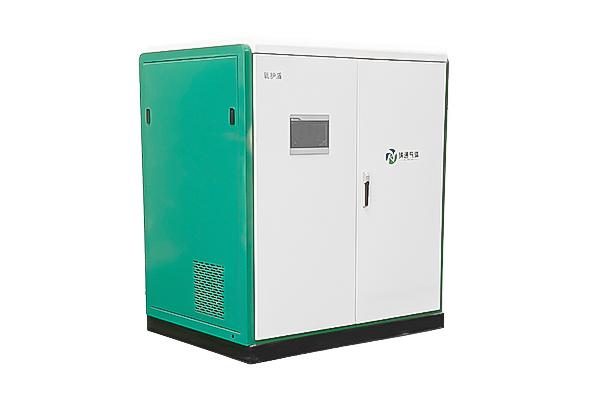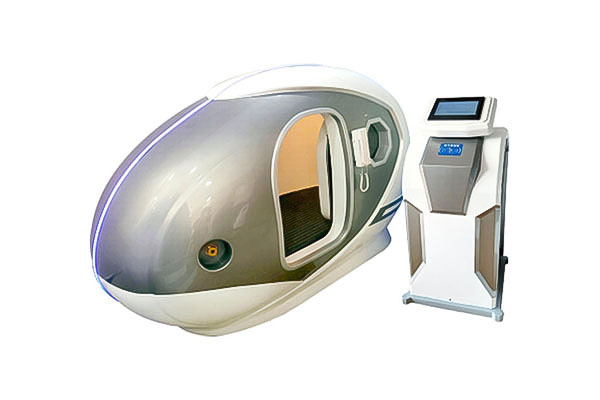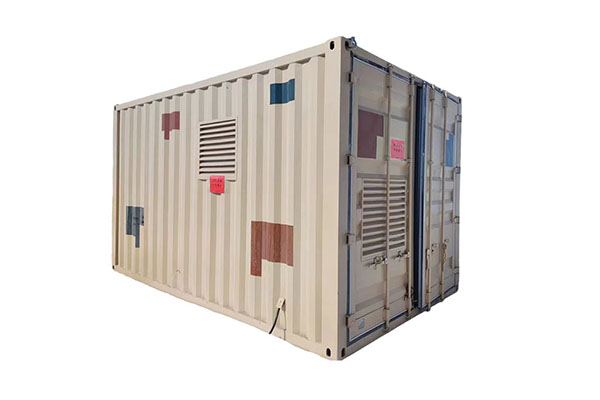How does a nitrogen generator improve nitrogen purity through advanced pressure swing adsorption technology?
Release Time : 2025-04-22
With the increasing demand for high-purity nitrogen in the industrial field, nitrogen generators have attracted widespread attention as an efficient and reliable way to supply nitrogen. Among them, nitrogen generators based on pressure swing adsorption (PSA) technology stand out in many application scenarios due to their excellent performance. This article will discuss in detail how nitrogen generators improve nitrogen purity through advanced PSA technology and analyze its application advantages in various industries.
First of all, understanding the basic principles of PSA technology is the key to understanding its ability to improve nitrogen purity. PSA is a physical separation method that mainly uses the ability of specific adsorbents to selectively adsorb gas molecules under high pressure. In a nitrogen generator, air is compressed and passed through a bed filled with carbon molecular sieve (CMS) or other adsorbent materials. Oxygen and other impurity gases are more easily captured by the adsorbent due to their smaller kinetic diameter, while nitrogen is relatively difficult to adsorb and can be collected through the bed. When the adsorbent reaches saturation, the adsorbent is regenerated by reducing the pressure or evacuating the vacuum to release the adsorbed impurity gas and restore its adsorption capacity.
Secondly, advanced PSA technology has significant advantages in improving nitrogen purity. Modern nitrogen generators are usually equipped with multiple adsorption towers, each of which performs adsorption and regeneration operations alternately. This multi-tower design not only improves the continuous production capacity of the system, but also removes impurity gases more effectively to ensure the high purity of the output nitrogen. For example, in some high-end applications, such as the electronics manufacturing industry or the pharmaceutical industry, nitrogen purity is required to reach more than 99.999%, and PSA technology can easily meet this stringent standard.
Furthermore, precise control of the adsorption and regeneration cycle is one of the important factors in improving nitrogen purity. By using an intelligent control system, the nitrogen generator can dynamically adjust the adsorption and regeneration time according to the actual working conditions to adapt to different load conditions. For example, under low load conditions, appropriately extending the adsorption time can further improve nitrogen purity; while under high load conditions, a stable nitrogen output can be maintained by shortening the regeneration time. In addition, some advanced nitrogen generators are also equipped with an online monitoring system that can detect the purity of the output nitrogen in real time and automatically adjust the operating parameters as needed to ensure that high-quality nitrogen is always provided.
It is worth noting that the selection and treatment of adsorbents are also key links affecting nitrogen purity. High-quality carbon molecular sieves have high adsorption capacity and selectivity, and can efficiently adsorb oxygen and other impurity gases under high pressure while minimizing the adsorption of nitrogen. To further improve the adsorption effect, manufacturers usually pre-treat the adsorbent, such as high-temperature activation or surface modification, to increase its effective surface area and active sites. This not only improves the adsorption efficiency, but also extends the service life of the adsorbent and reduces operating costs.
In addition, an efficient post-treatment system is also crucial to ensure the purity of the final nitrogen. Even after the PSA process, a small amount of impurity gas may still remain in the nitrogen. For this reason, many nitrogen generators are equipped with multi-stage filtration systems, including particulate filters, activated carbon filters, and catalytic oxidation devices to remove harmful substances such as tiny particles, organic compounds, and trace carbon monoxide. These post-treatment steps further purify the nitrogen to meet or even exceed the requirements of industrial standards.
Finally, the user feedback mechanism plays an important role in the continuous improvement of the nitrogen generator. By collecting users' actual usage experience and suggestions, manufacturers can promptly discover the shortcomings of the product and optimize the formula and technical solutions accordingly. For example, in response to the nitrogen purity fluctuation problem reported by some customers, the R&D team may re-examine the choice of adsorbent or improve the intelligent control algorithm to ensure that the module can maintain efficient and stable operation under different working conditions. This market-oriented continuous improvement strategy enables the nitrogen generator to better meet the actual needs of various industries.
In short, by adopting advanced pressure swing adsorption (PSA) technology, the nitrogen generator not only achieves a significant improvement in nitrogen purity, but also shows excellent performance in durability, adaptability and intelligent management. This not only provides a more environmentally friendly and efficient nitrogen solution for various applications, but also contributes to promoting the sustainable development of various industries. With the continuous advancement of technology, we are expected to see more innovatively designed nitrogen generators in the future, continuing to lead the frontier development in the field of gas separation.
First of all, understanding the basic principles of PSA technology is the key to understanding its ability to improve nitrogen purity. PSA is a physical separation method that mainly uses the ability of specific adsorbents to selectively adsorb gas molecules under high pressure. In a nitrogen generator, air is compressed and passed through a bed filled with carbon molecular sieve (CMS) or other adsorbent materials. Oxygen and other impurity gases are more easily captured by the adsorbent due to their smaller kinetic diameter, while nitrogen is relatively difficult to adsorb and can be collected through the bed. When the adsorbent reaches saturation, the adsorbent is regenerated by reducing the pressure or evacuating the vacuum to release the adsorbed impurity gas and restore its adsorption capacity.
Secondly, advanced PSA technology has significant advantages in improving nitrogen purity. Modern nitrogen generators are usually equipped with multiple adsorption towers, each of which performs adsorption and regeneration operations alternately. This multi-tower design not only improves the continuous production capacity of the system, but also removes impurity gases more effectively to ensure the high purity of the output nitrogen. For example, in some high-end applications, such as the electronics manufacturing industry or the pharmaceutical industry, nitrogen purity is required to reach more than 99.999%, and PSA technology can easily meet this stringent standard.
Furthermore, precise control of the adsorption and regeneration cycle is one of the important factors in improving nitrogen purity. By using an intelligent control system, the nitrogen generator can dynamically adjust the adsorption and regeneration time according to the actual working conditions to adapt to different load conditions. For example, under low load conditions, appropriately extending the adsorption time can further improve nitrogen purity; while under high load conditions, a stable nitrogen output can be maintained by shortening the regeneration time. In addition, some advanced nitrogen generators are also equipped with an online monitoring system that can detect the purity of the output nitrogen in real time and automatically adjust the operating parameters as needed to ensure that high-quality nitrogen is always provided.
It is worth noting that the selection and treatment of adsorbents are also key links affecting nitrogen purity. High-quality carbon molecular sieves have high adsorption capacity and selectivity, and can efficiently adsorb oxygen and other impurity gases under high pressure while minimizing the adsorption of nitrogen. To further improve the adsorption effect, manufacturers usually pre-treat the adsorbent, such as high-temperature activation or surface modification, to increase its effective surface area and active sites. This not only improves the adsorption efficiency, but also extends the service life of the adsorbent and reduces operating costs.
In addition, an efficient post-treatment system is also crucial to ensure the purity of the final nitrogen. Even after the PSA process, a small amount of impurity gas may still remain in the nitrogen. For this reason, many nitrogen generators are equipped with multi-stage filtration systems, including particulate filters, activated carbon filters, and catalytic oxidation devices to remove harmful substances such as tiny particles, organic compounds, and trace carbon monoxide. These post-treatment steps further purify the nitrogen to meet or even exceed the requirements of industrial standards.
Finally, the user feedback mechanism plays an important role in the continuous improvement of the nitrogen generator. By collecting users' actual usage experience and suggestions, manufacturers can promptly discover the shortcomings of the product and optimize the formula and technical solutions accordingly. For example, in response to the nitrogen purity fluctuation problem reported by some customers, the R&D team may re-examine the choice of adsorbent or improve the intelligent control algorithm to ensure that the module can maintain efficient and stable operation under different working conditions. This market-oriented continuous improvement strategy enables the nitrogen generator to better meet the actual needs of various industries.
In short, by adopting advanced pressure swing adsorption (PSA) technology, the nitrogen generator not only achieves a significant improvement in nitrogen purity, but also shows excellent performance in durability, adaptability and intelligent management. This not only provides a more environmentally friendly and efficient nitrogen solution for various applications, but also contributes to promoting the sustainable development of various industries. With the continuous advancement of technology, we are expected to see more innovatively designed nitrogen generators in the future, continuing to lead the frontier development in the field of gas separation.







